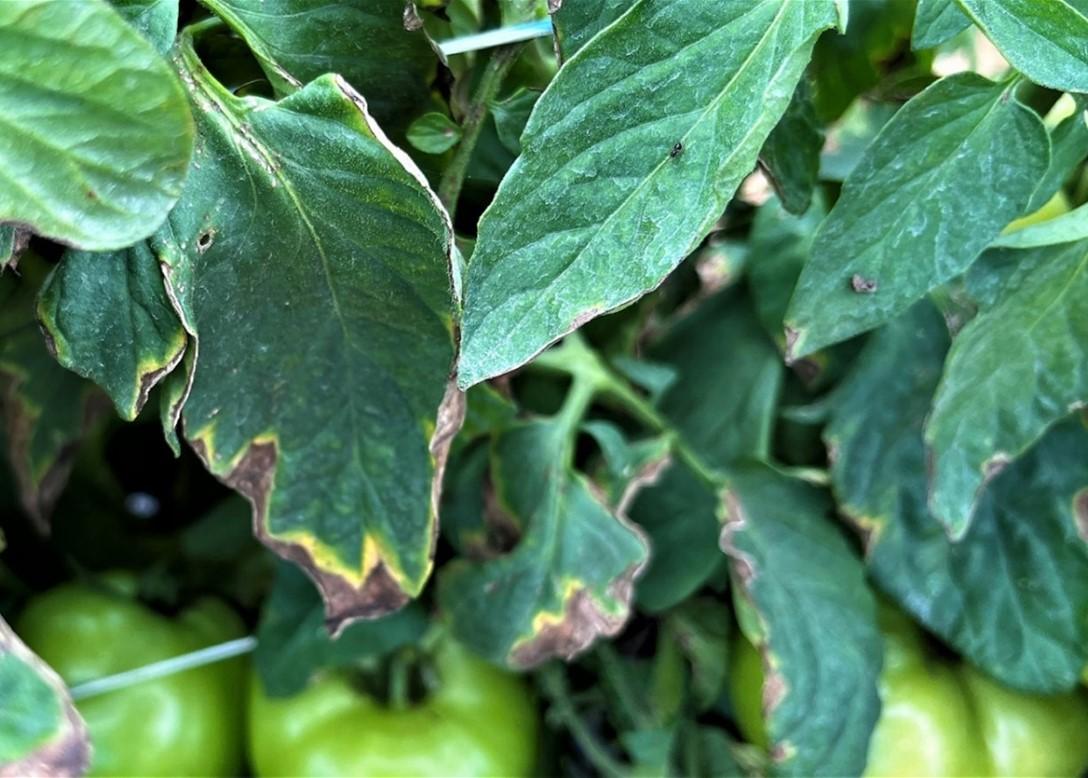Bacterial Canker of Tomato
A disease of tomato that we usually only see occasionally has been observed more frequently this year in several high tunnels in Maryland. The disease is bacterial canker caused by the bacteria Clavibacter michiganensis. A common symptom of the disease is leaf tips and margins that are yellow surrounded by dark brown tissue (fig. 1), although at times there can no yellow border, which is typically due to the cultivar or the environmental conditions. Veins on the leaves can become dark and sunken. Leaves can wilt starting at their tips to their branches after which they die and fall from the plant. Systemic infections of bacterial canker usually occur on more mature plants that are growing poorly with the oldest leaves curling, turning yellow and wilting. Fruit symptoms usually manifest themselves as small, round, raised white lesions with yellow margins especially near the calyx.
Bacterial canker of tomatoes is often introduced into a field via infected seed or transplants and can be spread by splashing water or plant contact (pruning and trellising). The disease can survive in soil debris for up to three years and can also survive on stakes (especially if wooden) or tools. Several nightshade species act as hosts for the disease. There are no spray treatments that are effective for its control.
This article appears in June 2023, Volume 14, Issue 4 of the Vegetable and Fruit News.
